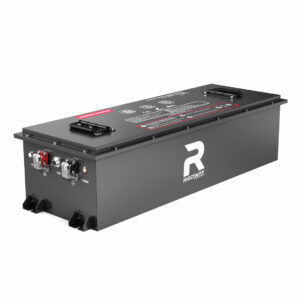What Factors Drain Your RV Battery During Road Trips?
How Do Driving Habits Affect RV Battery Usage?
Frequent short drives limit alternator charging, leaving batteries undercharged. Idling the engine provides minimal charge (5-10A) versus dedicated chargers (30-50A). Planning longer drives or using shore power overnight ensures full recharge. Minimizing parasitic loads like CO detectors (2-4W) during storage also conserves power.
Future Projections for RV Battery Adoption
Many RV owners underestimate how driving patterns directly impact battery health. The alternator’s charging capacity diminishes significantly during stop-and-go travel common in mountainous terrain or urban areas. For every hour of engine operation, only 15-20 minutes typically provide effective charging due to RPM variations. This makes cross-country highway driving 40% more efficient for battery replenishment than short camping excursions with multiple stops. Using a battery isolator can prevent accessory drain during engine-off periods, while voltage-sensitive relays automatically prioritize house battery charging when the engine runs.
| Driving Scenario | Charging Efficiency | Recommended Action |
|---|---|---|
| Short trips (under 30 mins) | 15-25% | Use portable solar charger |
| Highway driving | 70-85% | Maintain 60+ mph for optimal alternator output |
| Mountain terrain | 40-50% | Combine with generator use |
What Maintenance Practices Extend RV Battery Life?
Regularly cleaning terminals, checking electrolyte levels (for lead-acid), and ensuring 50%+ charge prevents sulfation. Storing batteries at 50-70% charge in moderate temperatures avoids capacity loss. Using a battery monitor to track voltage and recharge before dropping below 12.4V (lead-acid) or 20% (lithium) maximizes lifespan.

Proper maintenance routines can extend battery life by 3-5 years. For lead-acid batteries, monthly equalization charges at 15.5V help balance cell voltages and prevent stratification. Lithium batteries benefit from occasional full discharge cycles (once every 60 charges) to recalibrate their management systems. All battery types require terminal cleaning with baking soda solution quarterly to prevent resistance buildup – a 0.1Ω increase in terminal resistance can reduce usable capacity by 18%. In freezing climates, using heated battery blankets maintains optimal operating temperatures, reducing winter-related capacity loss by up to 45%.
Sustainability’s Role in RV Battery Innovations
“Neglecting battery maintenance is like skipping oil changes – the damage compounds silently,” warns RV technician Mike Kowalski. “I’ve seen $800 lithium packs fail in 18 months because owners never checked connection tightness.”
FAQs
- Q: How long do RV batteries last on a single charge?
- A: Lithium batteries last 2-3 days with moderate use; lead-acid lasts 1-2 days. Actual runtime depends on appliance load and temperature.
- Q: Can I charge my RV battery while driving?
- A: Yes, but alternators only provide 8-15A—insufficient for full recharges. Use a DC-DC charger for faster charging.
- Q: Do LED lights really save power?
- A: Yes. Switching from incandescent to LED cuts lighting energy use by 80%, saving 400-600Wh daily.
